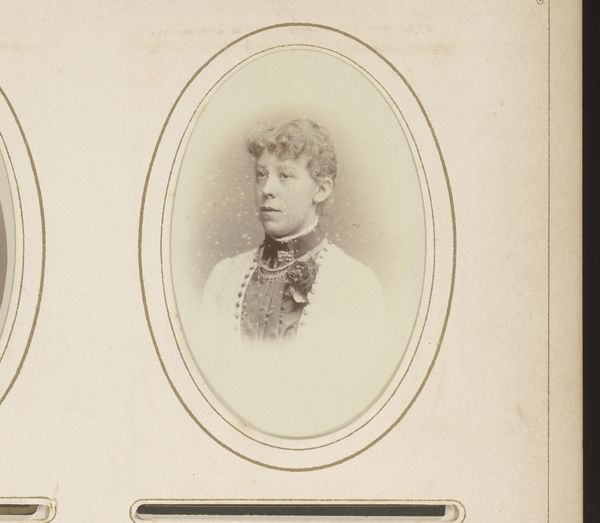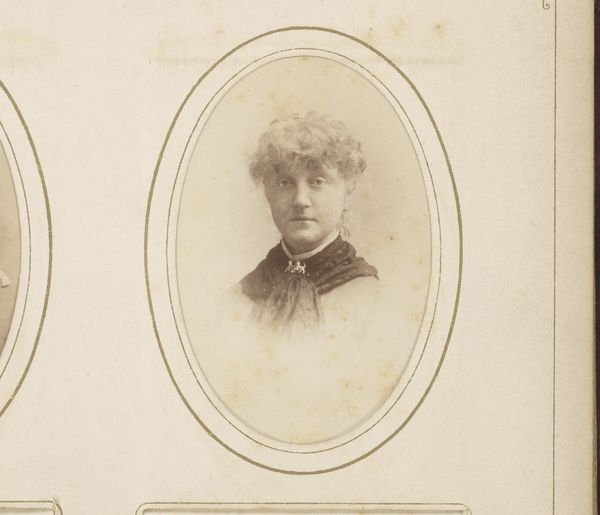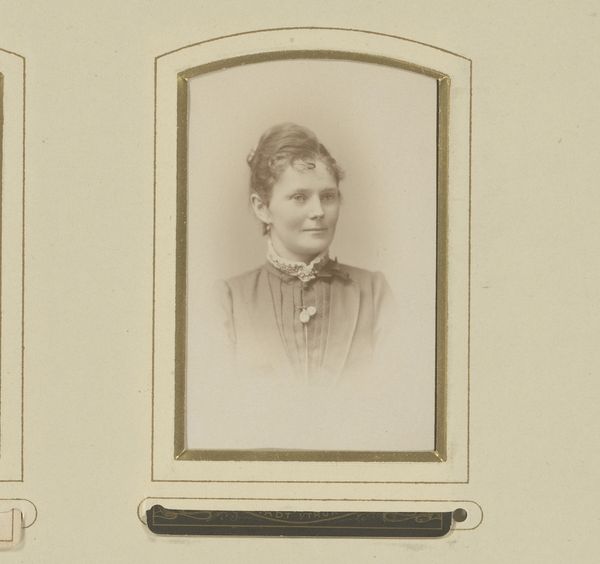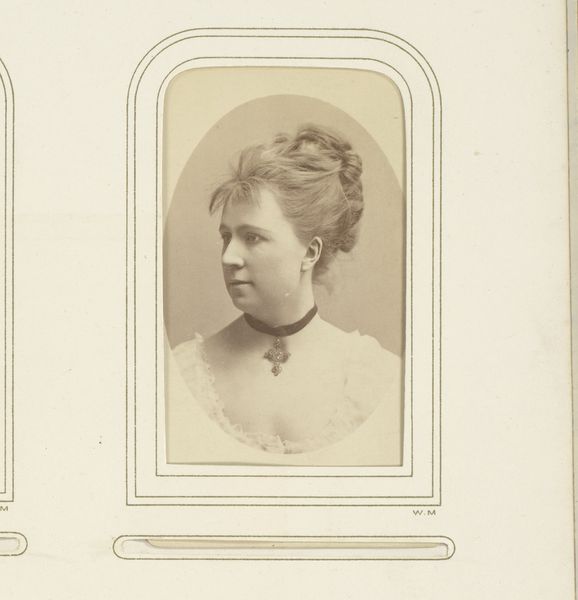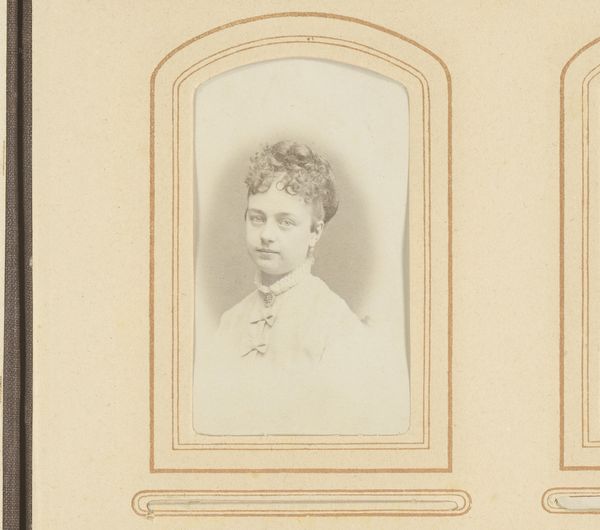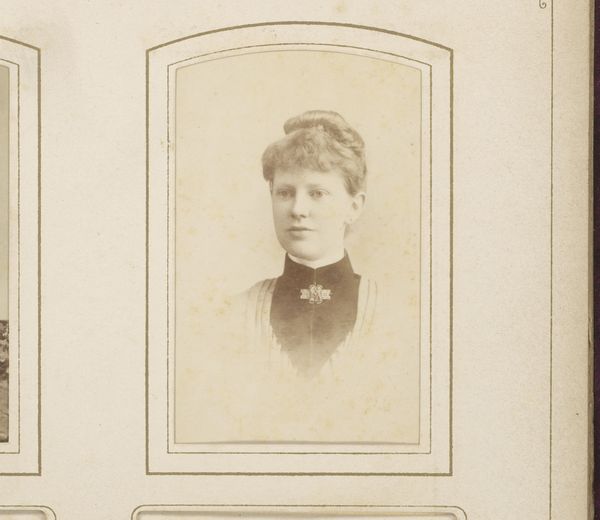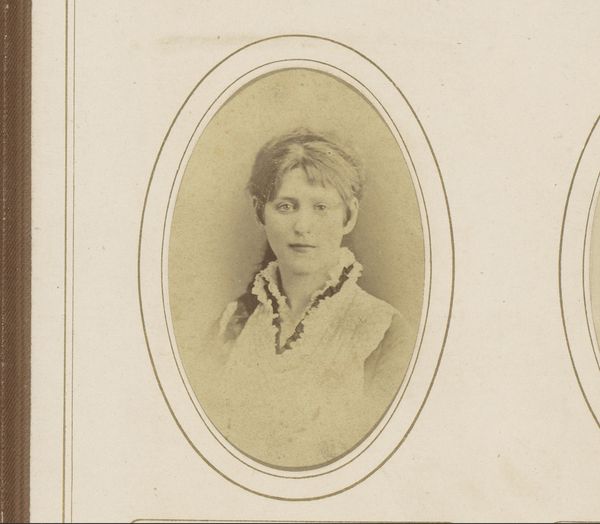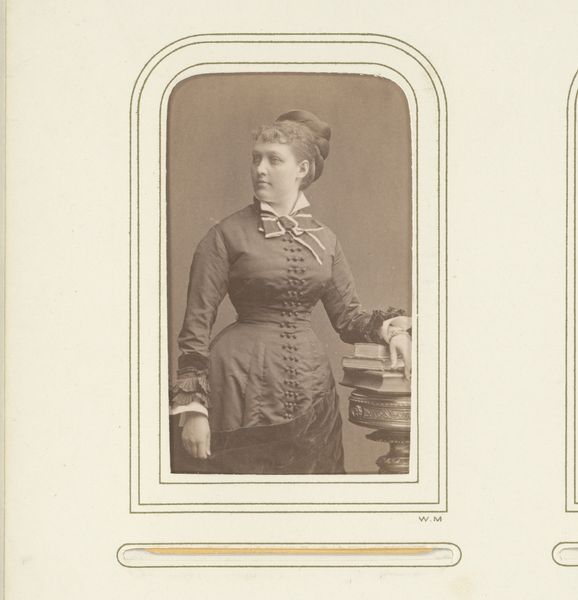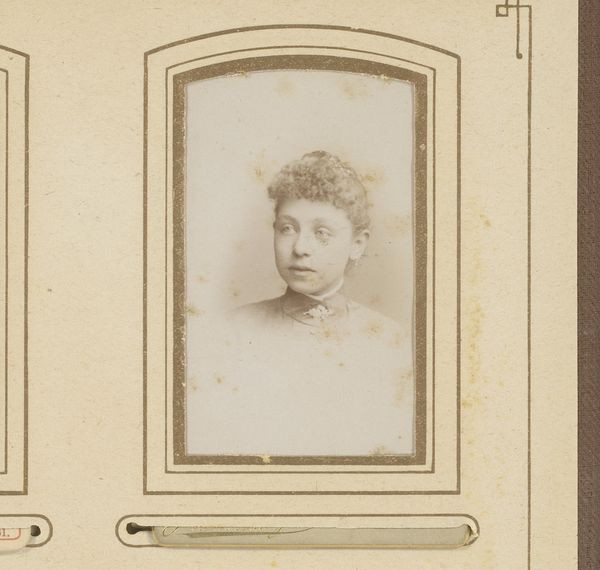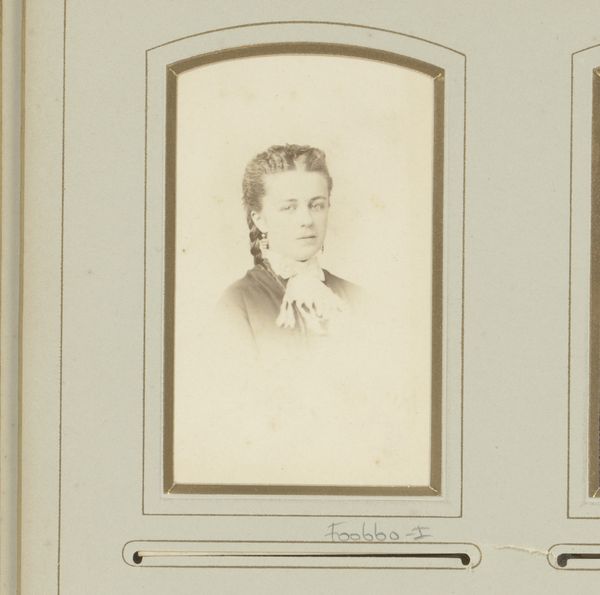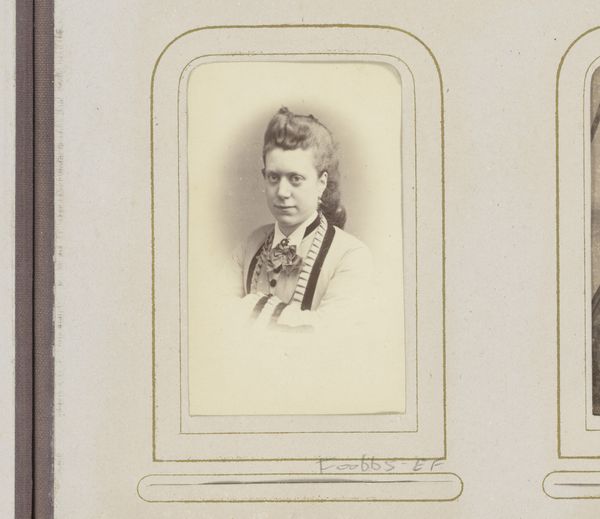
photography
#
portrait
#
photography
Dimensions: height 85 mm, width 51 mm
Copyright: Rijks Museum: Open Domain
Curator: Looking at this, I feel a strong sense of formality, almost a suppressed story waiting to be told. Editor: It’s fascinating, isn't it? This is a portrait of Anna Maria Klemming, captured between 1882 and 1889 by Gustaf Alfred Johanson Dahllöf. It is a photograph. Curator: The monochromatic tones give it a ghostly feel. It speaks to the constraints placed on women in that era, both visually in terms of pose and probably more broadly in life. How complicit was she in this construction? Editor: Considering photographic portraits like this were increasingly available to a wider demographic by that time, one must consider the industrial aspect. This was not a painting; it was mass-produced in a way that a painted portrait never could be, altering accessibility for representing oneself. The cost and labor differences must have changed the value of portraiture and the very means by which we perceive it. Curator: Yes, absolutely, but it still speaks of status. What did it mean for Anna Maria to present herself in this way? How did it reinforce or challenge existing gender norms? This could reflect something very personal to her – did she find empowerment or constraint in this image, or within the technological access this process availed? Editor: The material context emphasizes that portraits weren't only for the elite anymore. Photography offered new forms of self-expression and documenting, although, admittedly, still with parameters. Who was this for? A family album? A calling card? How was it materially circulated? It matters. Curator: Those are critical considerations. Thinking about portraiture itself—then and now—helps us contextualize image creation within systems of power and representation, both historical and modern. What endures is this quiet act of self-presentation—her attempt to assert something about her identity. Editor: It's the layering of the chemical process, photographic paper, and distribution that bring in more complexity. Considering photography was groundbreaking in production techniques, this should have had far-reaching effects in social settings and beyond just capturing images. Curator: Indeed. This single photographic print gives us just a small, tantalizing window onto the changing world around it, and that transformation helps give new and ever changing views through the present day. Editor: Agreed. Material analysis is crucial for contextualizing our view of this transformation, as is our broader social and economic landscapes of these times.
Comments
No comments
Be the first to comment and join the conversation on the ultimate creative platform.
